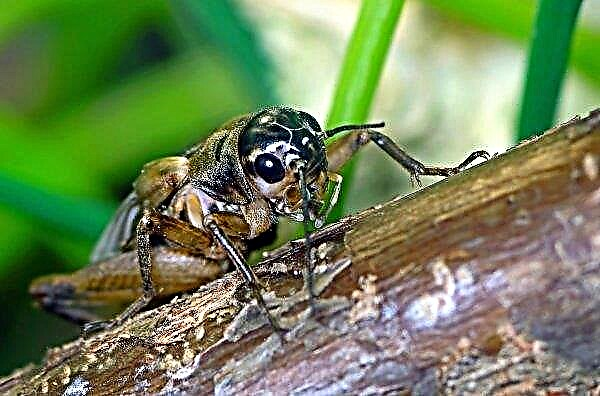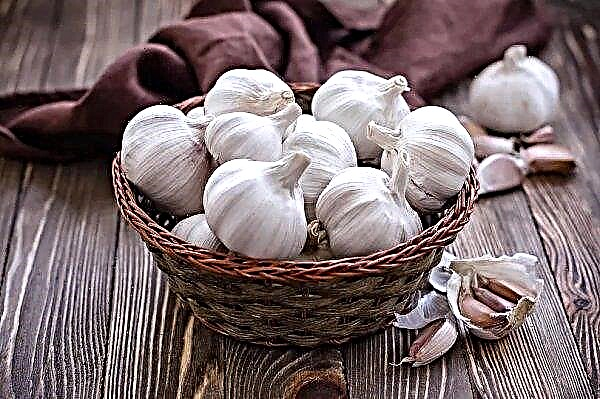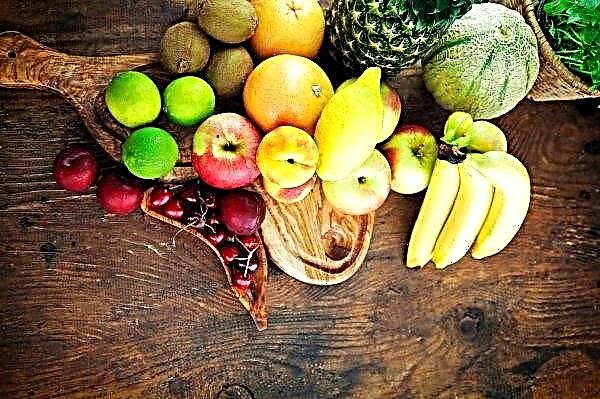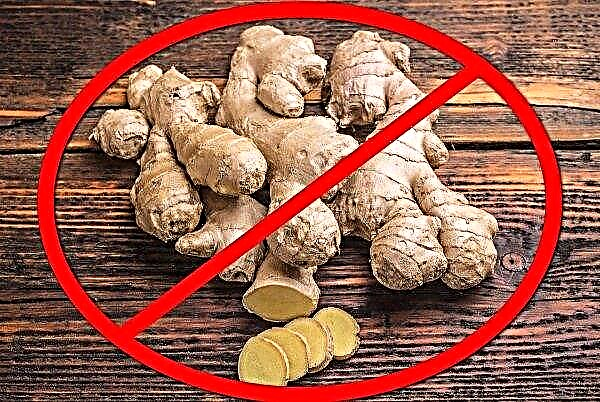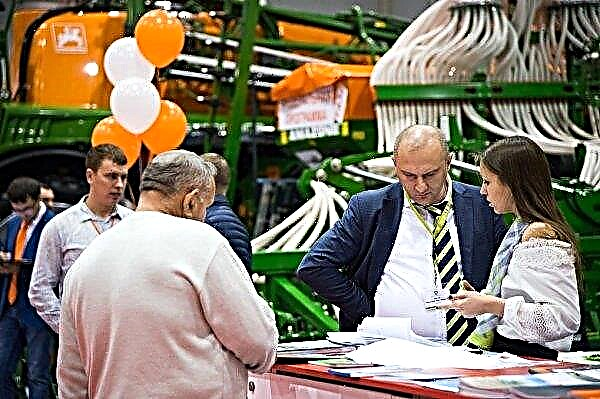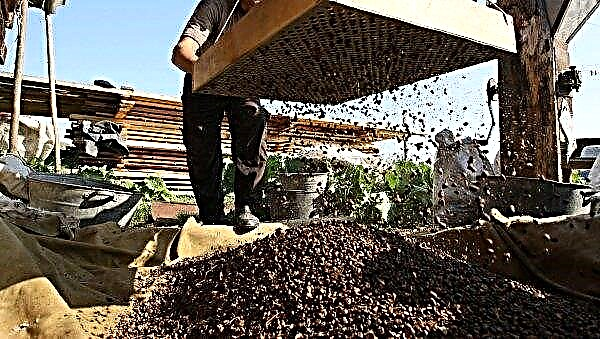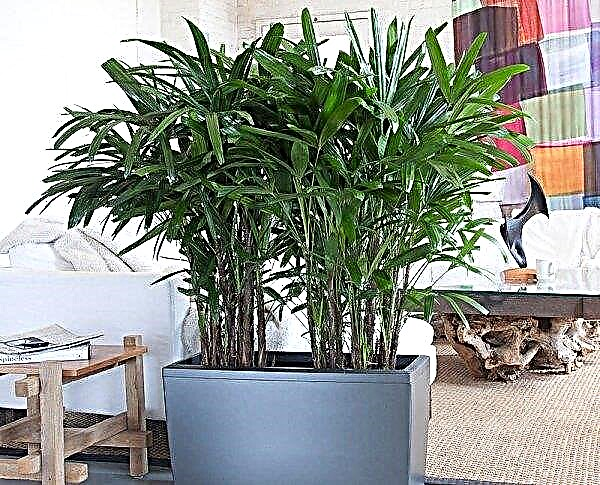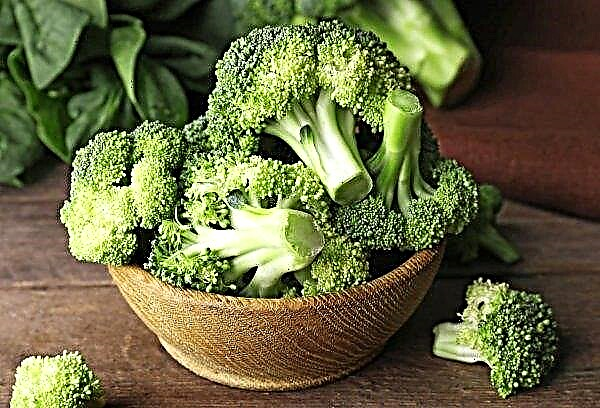When choosing a variety of pepper for planting on a site, always take into account the climatic characteristics of the region and the plant's requirements for them. Unlike many other varieties, Bonus sweet pepper grows well both in regions with a temperate climate and in Siberia, and its taste makes the vegetable one of the first contenders for planting. Why such fruits are noteworthy and what you should know about the features of their cultivation, you will learn about this from this article.
Description and characteristics of the variety
In the description of any variety of crops, the taste of their fruits plays an important role, but this is not the only thing that may interest the gardener. Describing the Siberian bonus pepper variety, it is worth paying attention to the history of selection and the overall productivity of the plant, which directly affects its positive qualities.
History of Variety Breeding
Despite the fact that this pepper can be grown in any region of the Russian Federation, it appeared in Siberia, thanks to the efforts of S.V. Ugarova and V.N.Dederko. In 2012, a new variety of pepper was included in the State Register of the Russian Federation and has since been recommended for cultivation both in open soil and under film shelters.
The Siberian bonus refers to varieties of medium maturity, which means that it will be possible to harvest the first crop no earlier than 110 days after sowing the seeds.Did you know? Bell pepper is an excellent remedy for depression. The fruits contain a large amount of vitamin B, which positively affects the human nervous system, normalizes sleep and reduces irritability.
Productivity
The productivity indicators of the Siberian bonus largely depend on the place of its cultivation. So, if we are talking about cultivation in open soil, then even with properly organized care, you should not hope for a harvest of more than 3-4 kg from a bush, while in greenhouses from one plant it is quite possible to get up to 5.5-6 kg of succulent fruits.
Description of the fetus
 Closed pepper bushes 80 cm high each hide in themselves a considerable number of fruits that are tied, which at the stage of technical maturity are painted in rich green color, and on the biological one they acquire a beautiful dark orange color, which distinguishes these peppers favorably from fruits of other varieties. The shape of the pepper The Siberian bonus is cuboid, and the mass of one fully ripened specimen reaches 100–110 g, with a wall thickness of 6–8 mm.
Closed pepper bushes 80 cm high each hide in themselves a considerable number of fruits that are tied, which at the stage of technical maturity are painted in rich green color, and on the biological one they acquire a beautiful dark orange color, which distinguishes these peppers favorably from fruits of other varieties. The shape of the pepper The Siberian bonus is cuboid, and the mass of one fully ripened specimen reaches 100–110 g, with a wall thickness of 6–8 mm.
The taste of pepper always remains at its best, and it doesn’t matter where you grow it. The bitter substance capsaicin is absent in its pulp, so nothing will spoil the sweet taste and delicate texture. Thanks to this, the fruits of the Siberian bonus are equally well suited for use in any culinary purposes.
Advantages and disadvantages of the variety
You can choose one or another cultivar only after a detailed assessment of all its advantages and disadvantages.
- In the case of pepper Siberian bonus in the first group includes the following advantages:
- high productivity;
- lack of bitterness;
- excellent pepper aroma;
- juicy and fleshy flesh;
- good ripening ability without loss of initial elasticity;
- comparative unpretentiousness of bushes in leaving and a possibility of cultivation in any climatic region.
If you follow the rules of cultivation, you will not notice any drawbacks of the described pepper, except that in comparison with early ripe fruits you have to wait longer for the harvest.
The basic rules for growing varieties
In order to get the maximum return from the cultivated crop in the form of high productivity, it is worthwhile to competently approach the issue of its cultivation even at the stage of sowing seeds. We propose to consider the basic requirements of the variety to this process.

Preparing seeds for sowing
The process of preparing pepper seeds for sowing usually consists of several main stages:
- Selection of suitable instances (After dissolving 30–40 g of table salt in 1 liter of water in water, mix the seeds in it and after 5–7 minutes evaluate the suitable ones: they will all sink to the bottom of the container, after which they must be pulled out and dried well on a paper towel).
- Sorting and pickling. After sorting the seeds by size, place them in a glass with a weak solution of potassium permanganate for 10-15 minutes, then rinse under running water and dry again.
- Processing with macronutrients a few days before planting. After putting the seeds in gauze napkins, dip them for 20-30 minutes in a solution prepared from one teaspoon of nitrophoska (or the same amount of wood ash) and one liter of water. Rinse the planting material after this procedure is not necessary.
Important! To speed up the germination of sown seeds, you can use special chemicals in the preparation, the best of which in the case of the described pepper will be Azotofit, fertilizers Ideal and Humate Sodium.
If you want to accelerate the germination of seeds in all possible ways, then it is worth paying attention to the procedure of soaking and targeted germination. For this, the prepared and dried seed is slightly moistened and left for a day in a warm room, sowing into the soil only after the appearance of the first sprouts.

However, such planting material can only be placed in moist soil, since most of it will quickly die in dry soil. Spotting will also help accelerate sprouting, and many gardeners consider this option more effective than previous procedures.
In this case, the preparation of the selected seed is performed a few weeks before the day of disembarkation and provides for the following actions:
- Fill a high capacity with water to 2/3 of its volume, using a liquid with a temperature of + 20 ... + 22 ° C.
- Lower the tip from the aquarium compressor to the bottom of the vessel and wait for air bubbles to appear.
- Dip the seeds wrapped in cheesecloth inside and leave them there for 24–36 hours, all the while observing the even distribution of air. After the specified time, remove the planting material and dry it, but without exposure to direct sunlight.
Preparing land for seedlings
The second important point that you should pay attention to when sowing Siberian bonus pepper seeds is the proper preparation of the substrate, taking into account the desired level of its friability and proper nutrition.

The easiest way to purchase a ready-made soil mixture, paying attention to the following soil options:
- a mixture of two parts of humus and one part of sod land;
- land from equal proportions of peat and humus;
- a substrate of three parts of humus and two parts of soddy soil.
In addition, in any finished substrate it will be useful to add a small amount of chalk or dolomite flour, in the amount of 1-2 tbsp. tablespoons per 10 liters of soil. If possible, you can mix it with a similar amount of ordinary garden soil or land for indoor plants, which also has characteristics suitable for seedlings.
Important! When using soil from your site, make sure there are no larvae of pests and pathogens in it, for which it is better to pre-calcinate the soil in the oven or steamed with steam.
Dates and features of sowing seeds
Sowing seeds of the Siberian seedling bonus for seedlings is carried out 60–70 days before the alleged planting of grown seedlings at a constant place of growth. In Siberia, this time most often occurs at the end of March or the beginning of April, but in warmer regions seedlings are sown at the end of winter. G
The main requirement is a suitable temperature regime in a room with seedling tanks, which in this case provides for maintaining temperature values within + 26 ... + 28 ° С.

Seedling Care
In general, the rules for growing Siberian pepper seedlings almost completely coincide with the requirements of other sweet Siberian varieties. At the same time, in addition to maintaining a suitable temperature (not lower than + 26 ° C), It is worth paying attention to the following nuances:
- A pick of young pepper plantsgrown in large seedlings. This procedure is performed after 2 true leaves appear on the plants, but always with preliminary wetting of the substrate and preparation of a suitable container (for example, peat pots or home-made paper cups). During the first week after transplanting, young sprouts are best shaded from direct sunlight.
- Watering seedlings after a dive allowed only on the 6th day, moreover, when introducing liquid, it is desirable to achieve wetting of the entire soil. Water for irrigation is first defended, and if we are talking about a heavy plumbing option, then it is also filtered. The ideal time for watering young sprouts is the morning hours, as the topsoil has time to ventilate well during the day.
- First feeding grown peppers can be performed only two weeks after the dive seedlings. In this case, the mixture of sodium humate and any complex fertilizer for vegetable crops is well suited for the role of a nutritional composition. Repeated application of nutrients can be performed 10 days after the previous one.
Important! If you notice that the leaves of the pepper have turned pale and the stems have thinned, it is better to use nitrogen-containing compounds such as urea for top dressing. It is useful to apply it both during watering under the root, and by spraying on the leaves, but always dissolving in water according to the attached instructions.
About a month before the alleged planting of seedlings at a constant place of growth, it must be hardened. At the initial stages, it is enough to take out the boxes to the balcony or terrace and leave them there for 2-3 hours, daily increasing this time by half an hour.
However, such aeration is allowed only if the air temperature is not lower than + 15 ° C, otherwise immature plants can simply freeze. Seedlings are planted at a constant place of growth when it reaches a height of 20–25 cm.
Mid-season pepper varieties also include:
Rules for planting seedlings in the ground
If pepper seeds for seedlings were sown in March or April, the time for replanting the grown bushes will be around the end of May or early June, when the likelihood of return frosts decreases. If there is no certainty about this, then it is worthwhile to build a protective film cover over the plants, which can be easily dismantled when the temperature is stabilized.
As for the plan for planting seedlings, the Siberian bonus pepper variety does not tolerate excessive thickening, therefore, more than 6 plants should not be planted per 1 m² of territory. The planting process itself proceeds according to the standard plan: after removing the seedlings from plastic cups, it must be carefully placed in pre-arranged holes, but not deepened into the soil.

Unlike tomatoes, pepper does not grow a large number of side roots, so there is no point in over-deepening it. Transplanted bushes can be slightly moistened and mulched to preserve moisture for a long time.
Plant care after transplanting into the ground
After transplanting seedlings of pepper in open soil, the care of plants does not stop, but on the contrary, it must be done with even greater zeal.
To get a good crop, it is not enough to plant plants in the sunny sunny area, it is still important to organize watering properly, to carry out the earthing up and loosening of the soil under the bushes. Each of these actions has its own characteristics, which in no case should be forgotten.
Watering and fertilizer
The Siberian bonus is favorable to watering the pepper variety, but this does not mean that the plants need to be poured. Before making the next portion of the liquid, always assess the condition of the top soil layer, which should dry at least 2–3 cm in depth.
The best time for watering is in the early morning or evening, when the sun's rays do not have direct access to the leaves of pepper, which means they will not be able to leave burns on them. Water heated in a day is perfect for the role of irrigation liquid, but it is better not to use cold water. As for pepper nutrition, nutrients should be added several times a season, alternating mineral and organic compounds.
An example scheme for feeding pepper may look like this:
- First fertilizer bushes can be performed a few weeks after transplanting young plants to the garden, using chicken droppings diluted with water in a ratio of 1:15 for this. The introduction of a nutritional composition must necessarily be combined with watering so as not to burn the delicate root system of plants.
- Second application it is better to postpone fertilizers for a period before flowering of pepper, which will help it to form large and strong ovaries. In this case, complex mineral fertilizers or mullein infusion previously diluted in water at a ratio of 1:10 can be used as a nutritional composition.
- Third time nutrients are introduced into the soil during fruit setting, this time using organic substances and potash fertilizers.

Sometimes in the intervals between the planned application of fertilizers it is useful to irrigate with infusion of weed plants. To do this, wormwood, nettle and other herbs are poured with warm water and left in a warm room for a week. With a ready-made solution, pepper should be poured under the root, at the rate of 2 liters per bush.
Hilling and loosening the soil
Hilling and loosening the soil are important components of a comprehensive pepper care. These procedures are best performed a few days after watering, when the soil is easiest to process. However, when loosening it is not necessary to deepen the tool into the soil more than 3-4 cm, otherwise there is a serious probability of damage to the roots of the plant.
Hilling the bushes will help to make them stable and prevent the evaporation of moisture, so loosen the substrate should be added to the trunks as often as possible. In general, for one season it is desirable to perform these manipulations at least 3-4 times.
Did you know? Only 50 g of bell pepper provide the human body with a daily norm of vitamin C, preventing the development of colds and infectious diseases, so daily use of this vegetable in the summer will make it easier to survive the season of respiratory viral infections in the fall.
Formation and care of a bush of pepper
Given the height of the bushes of the described variety of pepper and its ability to grow, it is not surprising that the plants will have to be tied to a support and remove excess side shoots.

There are no clear deadlines for this procedure, but in the course of work, be sure to use only sharp scissors and crushed charcoal, which should be used to process the places of cuts. After the formation of the ovaries, it is also necessary to remove all the lower shoots, which can overly thicken and obscure the bush.
Diseases and Pests
If all agrotechnical requirements are observed, the invasion of pests and the development of diseases for peppers is not as scary as tomatoes, but even in this case it is worth knowing about possible problems.
Of the insects, plantations are usually harmed by aphids, whiteflies, scoops, slugs and bears, biting the roots of the bushes. To combat them, mechanical methods can be used (for example, manual collection of insects or the use of special nets over plantings) and chemical compositions that process the aerial parts of plants.

In the fight against the bear, preventive measures will also be equally effective, providing for abundant moistening of the soil in the holes an hour before the pepper is planted, as well as fencing the trunk with a cut plastic bottle, recessed into the soil by at least 5-10 cm.
The treatment of bushes with a solution of wood ash, which is applied to the surface of sheets 2-3 times per season, will help protect peppers from aboveground pests and diseases.
Harvesting and crop applications
As in other cases, the collection of fruits of the Siberian bonus variety is performed at the stage of complete biological maturity, when all the peppers acquire a bright orange color. During harvesting, each fruit must be cut from the bush with a sharp knife and placed in wooden or plastic boxes that will not allow the pepper to receive mechanical damage or completely crack. In the future, the harvested crop can be used both fresh and for conservation, combining with other vegetables.
Pepper variety The Siberian bonus is really a good option for planting in the open area or under film shelter, because regardless of the region, this culture always brings a stable, and most importantly, high-quality meat pepper crop.


